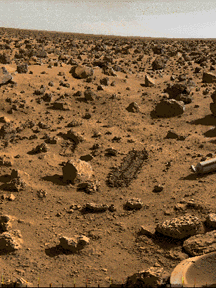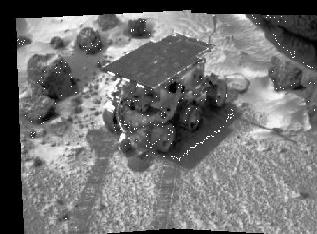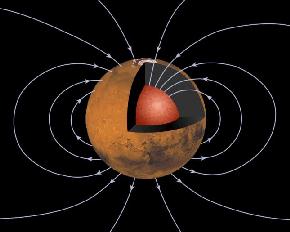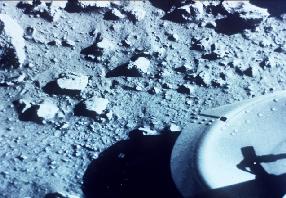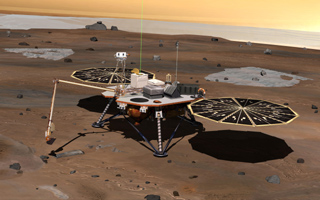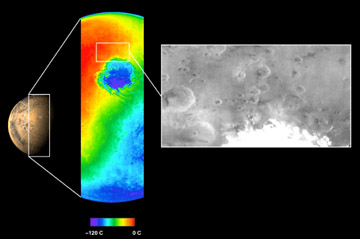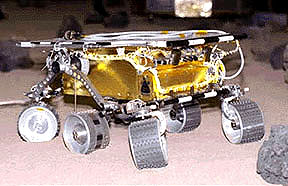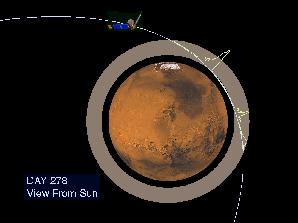Click on image for full size
NASA
Martian Soils
Soils form through a complex interaction of the molecules of soil with particles and molecules of the atmosphere. Measurements of the soil contribute to an understanding of a planet's climate, weather, surface processes, and atmospheric composition because of the way in which soils form.
The first analysis of Mars' soil from Viking landers found no evidence of life, instead showing that organic molecules are even more scarce than on the Earth's moon. The Viking missions did confirm the presence of water in the soils and atmosphere, in both solid and vapor form. The soils found near the rocks explored by Mars Pathfinder's Rover were similar to those found by Viking I (check the large topographic map of Mars for the distances between these two landing sites), even though the rocks were not. At the Viking landing site the rocks were commonly coated with a bright red dust, while at Ares Vallis, these rocks were rare. Instead the rocks seemed to be mostly dark gray in color. This suggests that soils of Mars may be uniform around the globe, perhaps carried all over Mars by global dust storms.
Scientists did not find evidence of hematite or maghemite - iron bearing minerals, near the Pathfinder landing site. Mars is expected to have more than the ususal amount of iron in the top soil (hematite and maghemite are magnetic materials), since the core is small, and the magnetic field, generated in the interior, is weak. Scientists are busy trying to understand this puzzling result.


